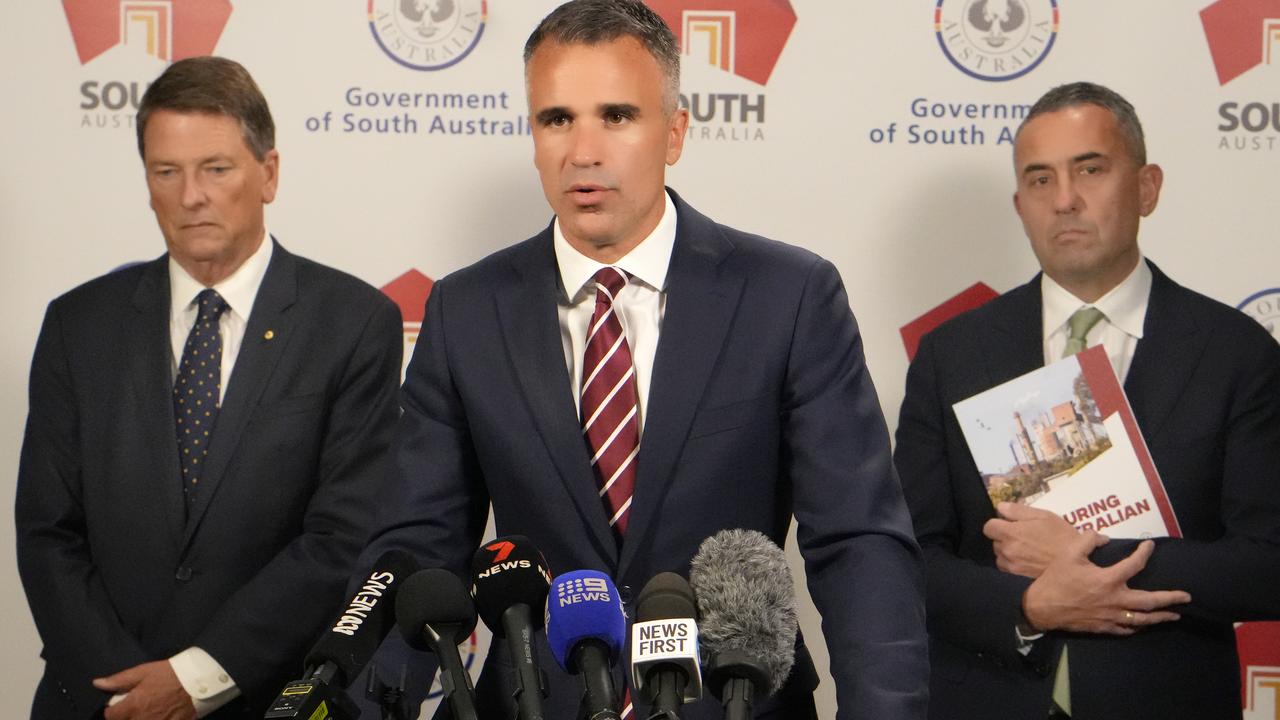Satellite images reveal Adelaide’s green cover from 1990-91 to 2018-19 | Use our interactive map to see how green your suburb is
Satellite images have revealed how Adelaide’s green cover has changed over the past 30 years. Use our map to see how green your suburb is, and which suburbs desperately lack vegetation.

SA News
Don't miss out on the headlines from SA News. Followed categories will be added to My News.
New data reveals how much green cover Adelaide’s suburbs have held onto over time – and the suburbs needing the most work to tackle warmer days brought by our changing climate.
The Environment Department has used satellite imagery to show how much green cover we had in 1990-91 and again in 2018-19 – and where it was increasing or declining.
Green cover mapped included any green vegetation, including trees, shrubs, lawns, ovals and golf courses.
The analysis found the average “greenness rating” across greater Adelaide reduced slightly from 29.52 per cent in 1990-91 to 29.22 per cent in 2018-19.
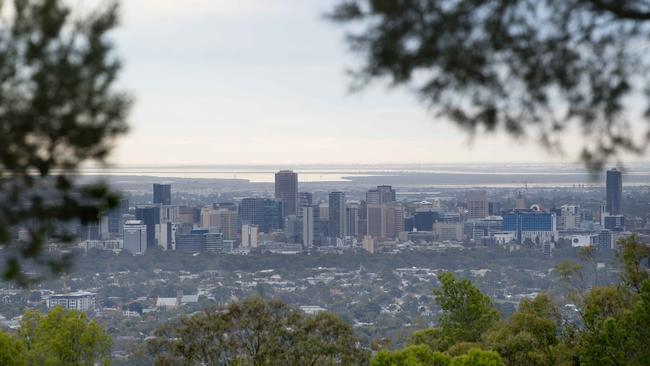
Aldinga had the largest increase in green cover over that time, at 150 per cent, followed by Greenwith, Tatachilla, Seaford Rise and Eyre, near Davoren Park.
Tennyson had a 42 per cent reduction in green area over the 28 years – the largest drop in Adelaide, followed by Athol Park, Peterhead, Angle Park and Regency Park.
There were 174 suburbs that became “greener”, while 237 had their green cover reduced.
The analysis focused on imagery captured between December and February.
Environment Minister David Speirs said environmental groups and government agencies could use the data for strategies to reduce urban heat and to improve planning.
“Easy access to green space has been linked to improved health and wellbeing, and often correlates to the increased desirability of suburbs,” he said.
SEARCH the database to see how your suburb has changed over time
“While it’s reassuring to see greater Adelaide’s greenness has remained relatively steady despite increased urban development over recent decades, it’s absolutely crucial we do everything we can to increase this,” Mr Speirs said.
Cleland was the top placed address for suburban “greenness”, with Hills suburbs dominating the ranks. Also in the top 20 were Hackney, Woodforde and Unley Park.
Trees for Life chief executive Natasha Davis said the data on suburbs with little green cover or significant drops in their “greenness” was particularly useful to identify areas for action.
“We know with climate change we’re going to need more and more green spaces and canopy cover to actually protect us from heatwaves and droughts,” she said.
“Canopy cover is critical because that gives a lot of shade and cools the pavements and that’s where a lot of the urban heat island is created. Where you’ve got canopy cover it can be 5 to 7 degrees cooler.”
The Environment Department’s manager of data and information, Matt Royal, said analysis was limited to imagery captured during summer because that was when “greenness” was most important for moderating surface temperatures.
The data did not take account of varying types of green surface.
“For example, lawn has the same greenness rating as remnant native vegetation even though they offer significantly different environmental benefits,” Mr Royal said.
The Environment Department’s director of science and information, Janice Goodwins, said Aldinga and Tatachilla have become greener due to the vineyard boom of the late 1990s.
Greenwith had experienced large housing developments with new tree plantings, and general growth of trees and shrubs in agricultural land.
Seaford Rise and Sheidow Park were greener because cropped and heavily grazed paddocks had been replaced by housing developments with landscaping.
Eyre’s former dryland paddocks had also been developed, featuring new irrigated ovals.
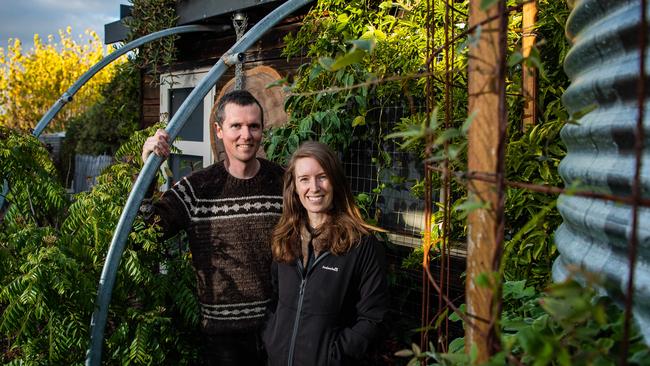
DATA WILL MAKE IT EASIER FOR COUNCILS TO BE GREEN
The release of information on Adelaide’s greenest areas could lead to healthy competition between councils to offer more green space, an Adelaide University professor says.
Professor Philip Weinstein, of the Faculty of Health and Medical Sciences, says councils will always face tension between the need to allow development and provide green environments for residents.
“The residents of most suburbs like green space because it’s pretty, it’s relaxing and provides recreational opportunities and it’s health-giving,” he said.
“For that reason, you’re setting up a competition indirectly between councils. It’s a little bit like tidy towns … everybody tries to be the greenest.”
A diversity of green space is vital for healthy communities, Prof Weinstein said.
For example, playing fields were needed to help people exercise and socialise, the shade from tree canopies reduced the effects of climate change, and natural bushland was important for biodiversity.
Green Adelaide presiding member Chris Daniels said the organisation would use the data on the city’s vegetation cover to help prepare a Greening Strategy for greater Adelaide and prioritise and allocate grants.
The organisation is partnering with councils and state government agencies to gather further data on tree canopy cover, urban heat and other greenness indicators.
Mr Daniels said while trees and plants native to the local region were best, “we shouldn’t neglect exotic or introduced species that have, over time, become a part of the landscape”.
“It’s pretty accurate to say that “any tree is better than no tree” because all trees can have something to offer. In fact, if they attract native animals and birds, then they are already offering at least one of three things – food, shelter or a place to breed.”
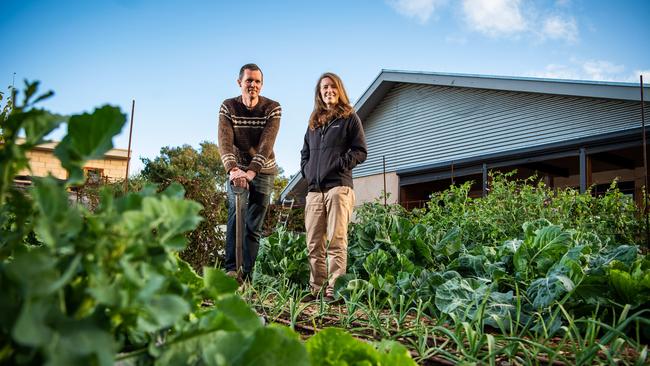
Aldinga’s green spaces have increased by 150 per cent over the past 28 years, and resident Dani Austin and her partner SamRyan are among those helping boost the area’s cover.
They planted native trees, such as grey box, she-oaks, and wattles, to cool their home during summer, along with deciduous trees and a grapevine, which allow them to take advantage of the winter sun.
The couple, who live in the Aldinga Arts Eco Village, has also been involved in revegetation work at the nearby Port Willunga Creek run Folk of All Trades, which offers sustainability workshops in everything from gardening to cooking and woodwork.
“There’s so many people in the area interested in nature and sustainability and trees and plants,” Mx Austin said.
Ian and Rebecca Peters have spent the past decade planting trees, plants and shrubs indigenous to the Burnside area at Mt Osmond.
“Council’s biodiversity team does a great job growing seedlings every year,” he said.
“We spent 10 years looking after those we planted and now the plants generate spontaneously.”
– Michelle Etheridge, Clare Peddie
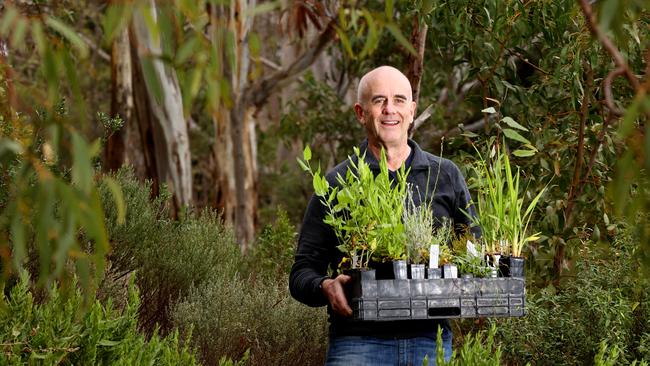
… BUT NOT ALL GREEN SPACE IS CREATED EQUAL
Adelaide must focus on quality as well as quantity when it comes to green space, the Conservation Council says.
Chief executive Craig Wilkins said Adelaide’s tree cover had diminished since 2011, when a legislation change made it easier to fell large trees.
A report the Conservation Council produced with other environmental organisations in April showed Adelaide was losing an estimated 75,000 trees every year.
“So while the amount of green space overall may not have changed much in some suburbs since 1990, the years since 2010 have been dominated by chainsaws and far too many trees being felled,” Mr Wilkins said.

He said trees acted as “air conditioners”, vital to battle the effects of climate change.
“Old trees are better than young and rich biodiverse spaces are better than lawn,” Mr Wilkins said.
“If we are to achieve the goal of Adelaide becoming a National Park City, we need enough green space throughout the city to create habitat for native bees, possums and birds, and help keep us healthy and happy.”
Local Government Association president Angela Evans said councils invested millions every year in open space, parks and gardens, and supported the Government’s target of increasing Adelaide’s urban green cover by 20 per cent, by 2045.
“Maintaining green cover has become a real challenge in areas with increasing infill development, with larger blocks often subdivided and open spaces and trees removed to make way for more housing,” she said.
Ms Evans said the sector was concerned a relaxing of planning requirements had allowed the removal of more trees.
The LGA welcomed recently-introduced requirements for developers to plant trees, but was worried the Government’s Tree Offset Scheme made it easier and cheaper for developers to pay a small amount into a fund in lieu of plantings.
-Michelle Etheridge
Originally published as Satellite images reveal Adelaide’s green cover from 1990-91 to 2018-19 | Use our interactive map to see how green your suburb is



